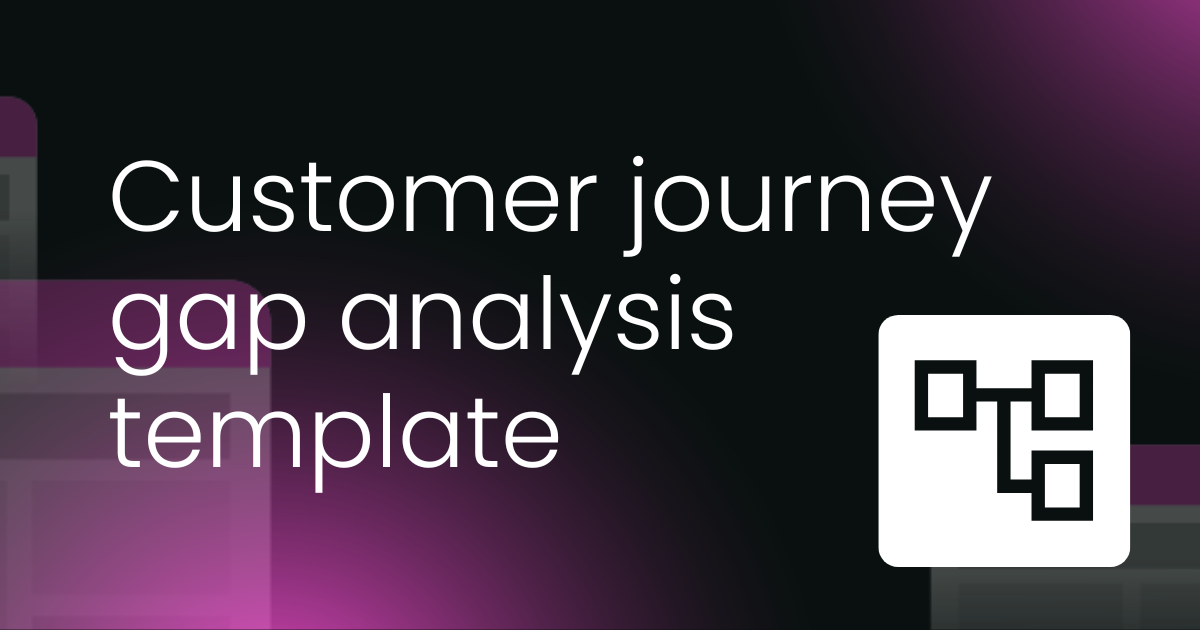When does the customer journey begin?
Sales: “When I arrange a call with them.”
Marketing: “When they see our ad on Google.”
Customer Success: “When we begin onboarding them.”
Finance: “When they sign the contract.”
It can be easy for each department to focus on the channel that they ‘own’ - but your customers simply don't care about that.
"One of the top reasons customers stop buying is that organizations make it too difficult to buy from", says iQuipt's Brett Trainor. "Buyers don't care about MQLs, opportunities or pipelines. They just want a frictionless process to buy your product when they are ready. This means an organizational shift and approach."
Your job as a sales enabler is to empower sales reps to engage with customers, so it makes sense that you embed their understanding of the customer journey and experience. The buyer’s experience should be the bedrock of sales enablement.
However, according to the Aberdeen Group, only 36% of companies currently have a process in place for mapping customer journeys.
What is customer journey mapping?
The customer journey covers the entire cycle of their relationship with your company - from first becoming aware of your business/product to becoming (and hopefully remaining) a customer.
Within each step in this journey they interact with your brand many different ways. Customer journey mapping allows you to see those touchpoints in a more meaningful context.

The aim of mapping this process is to identify areas where the journey can be improved to:
- Increase engagement through better targeting
- Eliminate ineffective touchpoints
- Increase conversion
- Retain/upsell
The ideal scenario is that you can use the map to align your sales process - in terms of cadence, sales script, the content or information provided - to the customer journey so that they are given just the right experience at the right time.
For enablement, and the company as a whole, laying out the customer journey like this helps to:
- Identify and optimize moments of truth in the CX.
- Shift to a customer-focused perspective.
- Break down silos between departments and facilitate cross-functional collaboration.
- Assign ownership of various customer touchpoints to increase employee accountability.
Why map the customer journey?
You, your sales reps, marketing, and the C-suite may think you already know what your customer’s journey looks like. You may all have different perspectives. You need hard truths so that you can map a realistic journey that uncovers areas of friction for customers and identifies solutions that allow sales to address them.
With the rise of mobile internet use and voice search customers, often literally, now have information at their fingertips. This means they have much higher expectations than ten or even five years ago. They expect:
- To be able to easily find information and resources to inform them of the options available.
- To be able to easily find detailed information on your website (and other online presence, such as social media or customer reviews) about your product, pricing, and differentiation.
- To have access to onboarding and training on how to use your product, as well as continuous support.
So put yourself in the shoes of the customer: what’s like to experience your company from that perspective? How easy is it to find what you’re looking for (through a web search, site navigation, even social media?) How helpful/engaging are the touchpoints?
Once you get under the skin of your current customer experience, you can start mapping out the ideal journey and innovate to stay ahead of the competition. Having today's journey and your ideal journey defined can help you discover and fill in the gaps of those experiences.
How to map the customer journey: getting started
1. Define the scope of your map
Most organizations won’t have one definitive customer journey - the number of products you sell, types of customer and possible situations are complex. A financial services company, for example, may offer advice on investment planning and retirement planning, as well as corporate financial services and mortgage brokering. All completely different So start by focusing on one customer segment and one customer journey - don’t try to do everything at once. This can then serve as a model or template in the future.
2. Identify your customer
Time to refer to those customer (or buyer) personas and pick one whose shoes you're going to step into. What are their motivators, their challenges? Who do they report to? This gives you a starting point for framing things from the customer’s viewpoint and painting a true picture of their trajectory.
3. Define customer touchpoints
Think about each stage of the journey and about the customer’s objectives at each point. This means considering the challenges and frustrations they may be experiencing, as well as their actions and the channels through which you are reaching them. Invite input from all stakeholders and build your customer journey map collaboratively to ensure accuracy.
This will help you to evaluate whether you are currently really delivering the experience they expect - and identify where there’s room for improvement.
Awareness (lead gen)
Your customer’s journey may begin much earlier than many in your organization think. It doesn’t start from the first call from someone in sales. It begins when they first become aware of your brand or product, often through marketing activities such as search engines, social media, advertising, email marketing etc.
Sales reps may not directly be involved in these activities, but they certainly need to be familiar with them so that they know what their prospects/leads already know about your company, where they have found this information and, most importantly, the messaging they have received, to give them the opportunity to offer a seamless experience when they make contact.
Interest (lead nurture)
Great, you’ve piqued their interest. They may have signed up for a newsletter, started to follow you on social or even called your business. This is the point at which continuing that engagement, and nudging them further along their journey (or through the sales funnel - but I personally hate that phrase!) is paramount. High quality content relevant to their needs is key to establish trust and brand authority.
This may be a point at which your business identifies them as MQLs and begins to research their company, needs, buying process etc and makes contact.
Consideration (lead nurture/sales)
The customer is evaluating your product and probably comparing it with competitors or other options. It’s at this point they may be considered SQLs. They need information to make a rational choice on whether the product is right for them - and this is typically where reps have their time to shine as advisers and, hopefully, as thought leaders.
Now coming into play:
- Explaining benefits in detail
- Overcoming objections
- Storytelling using case studies
Remember that, for B2B buyers, this stage usually gets pretty complicated. According to Gartner’s eye-opening The New B2B Buying Journey report:
"The typical buying group for a complex B2B solution involves six to 10 decision makers‚ each armed with four or five pieces of information they’ve gathered independently and must deconflict with the group. At the same time, the set of options and solutions buying groups can consider is expanding as new technologies, products, suppliers and services emerge."
Take this into account when assessing pain points and considerations - even if you’re dealing with one individual, there will be other stakeholders that influence whether to buy.
Purchase (sales)
The customer has made the decision to buy and now is the time to follow through on your promises by delivering the product in a way that builds on your brand values and impresses your new client.
Now comes the time for contract negotiations (which can be a pain point for the reasons if the customer has a complex and long-winded sign-off process), product delivery and training, and onboarding. At this point, sales reps often hands over to account management.
Retention (sales/account management)
You’ve got the customer to sign on the dotted line, but that’s not the end of the sales process by any means. You need to keep them as customers - it’s not just about renewal, but also encouraging repeat purchases, upselling and cross-selling where relevant.
This is done by delivering excellent customer service, and those moments of truth, like responding to customer queries promptly and effectively, and staying up-to-date with customer priorities and challenges and keeping product knowledge up to speed so that you spot opportunities that could be a good fit for them.
Advocacy (account management)
A great experience as a customer means they shout about your brand, helping to strengthen brand recognition and trust - and win new customers. People trust personal recommendations and social proof more than marketing and sales messages: 92% of B2B buyers are more likely to purchase after reading a trusted review. Likewise, each negative review costs the average business about 30 customers/clients.
4. Map future states
Now that you’ve visualized the current state of the customer journey, your map will probably show some gaps in your CX, information overlap, poor transitions between stages, and significant pain points or obstacles for customers.
Use mapping tools to plan out potential solutions and compare the current state of the customer journey with the ideal, future state. Present your findings company-wide to bring everyone up to speed on the areas that need to be improved, with a clear roadmap for expected change and how their roles will play a part in improving the customer journey.
Use a data-based approach for your customer journey map
Google Analytics provides deep insights into customers’ behavior from the moment they enter your website: where they came from, where they entered your site, their browsing activities, where they leave and much more. This tells you what they’re interested them and what turning them off - a goldmine of info for customer experience optimization.
You also have access to informal and more formal customer feedback - online reviews, for example, a CSAT (customer satisfaction index), or NPS (net promoter score).
Then there’s the all-important feedback from customer-facing employees; not just reps but those who deal with customers after the sales, such as account managers and customer success managers.
Gather whatever you can to help inform your map and understand how to define success for your organization.



 Follow us on LinkedIn
Follow us on LinkedIn




